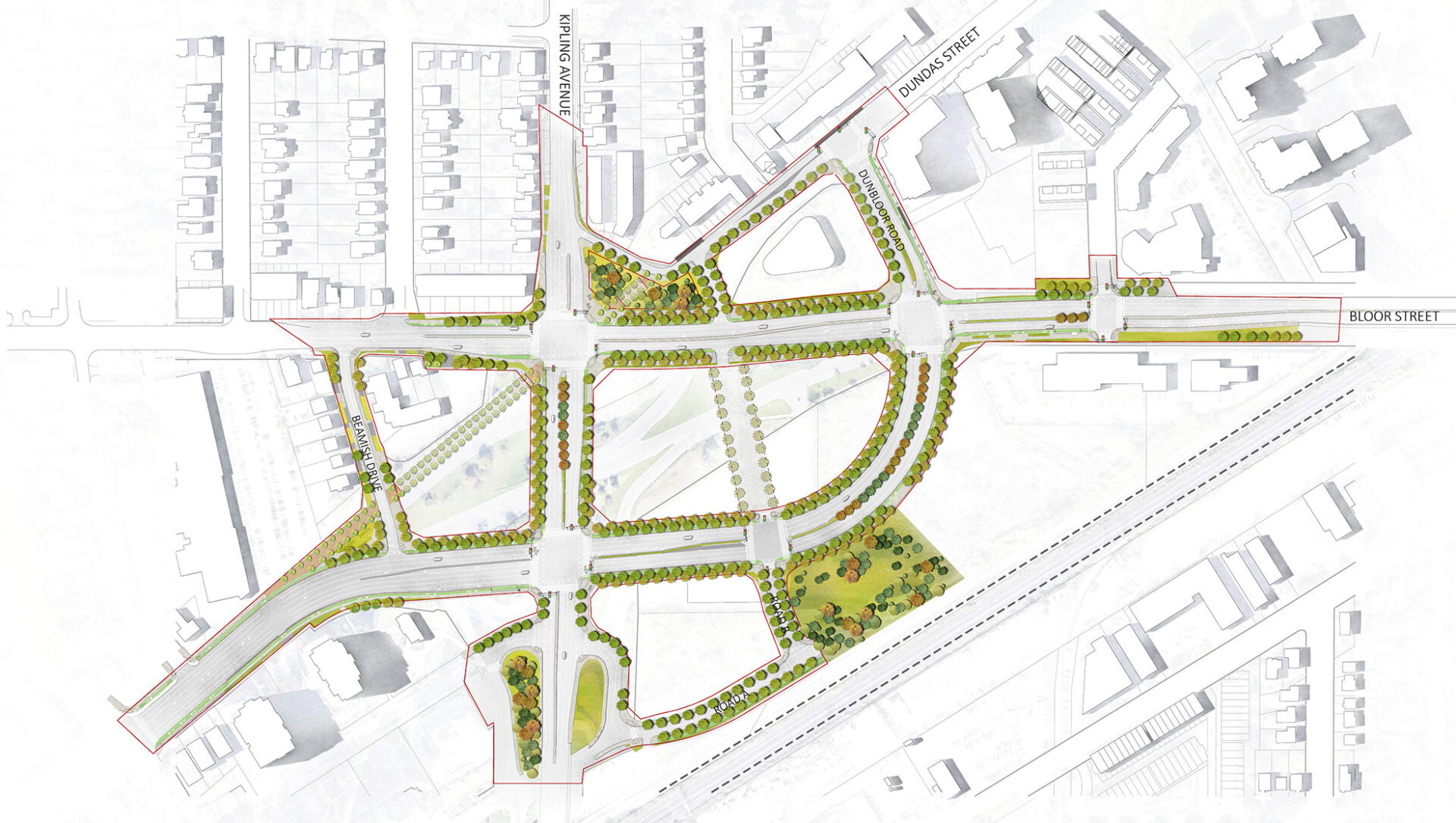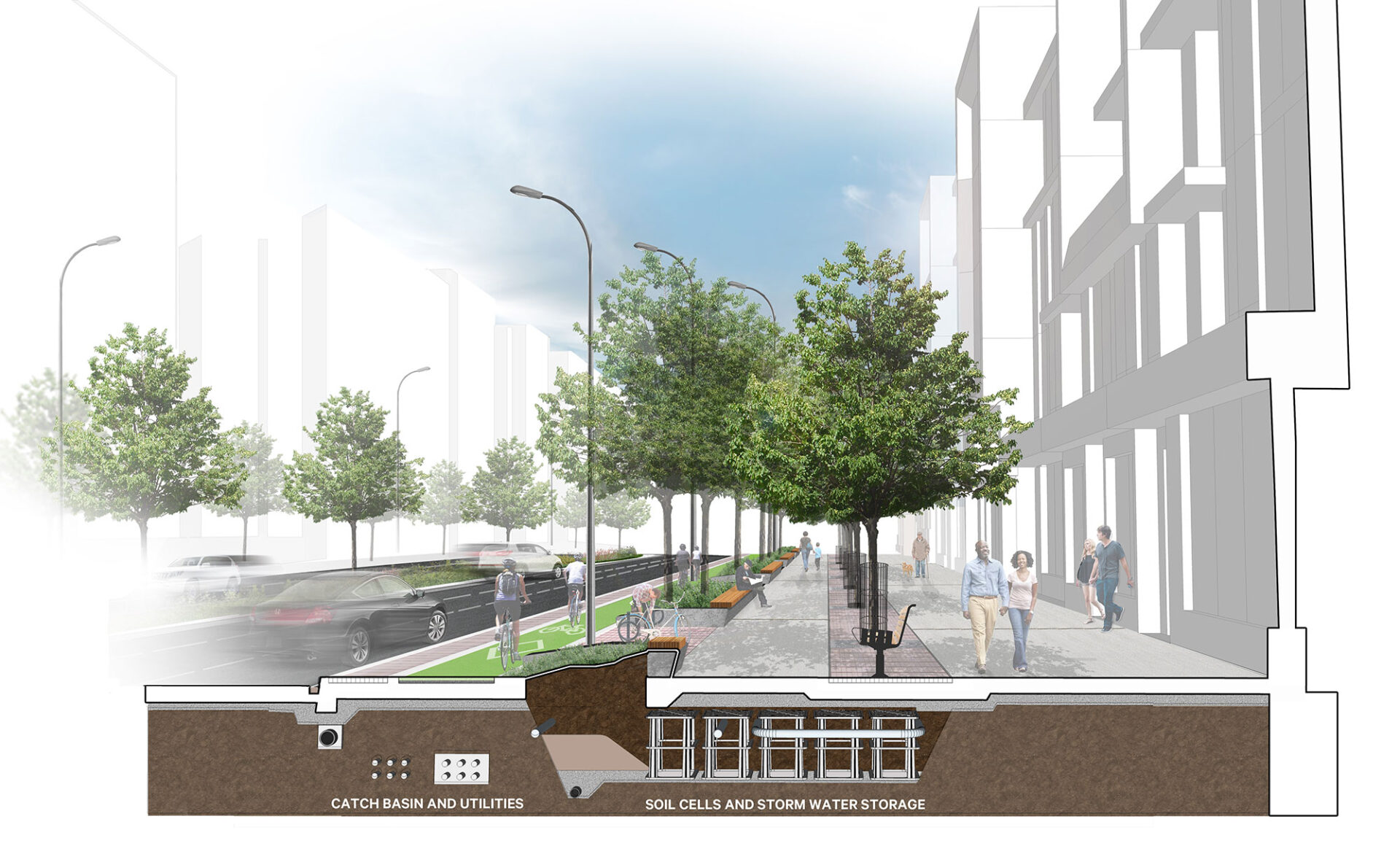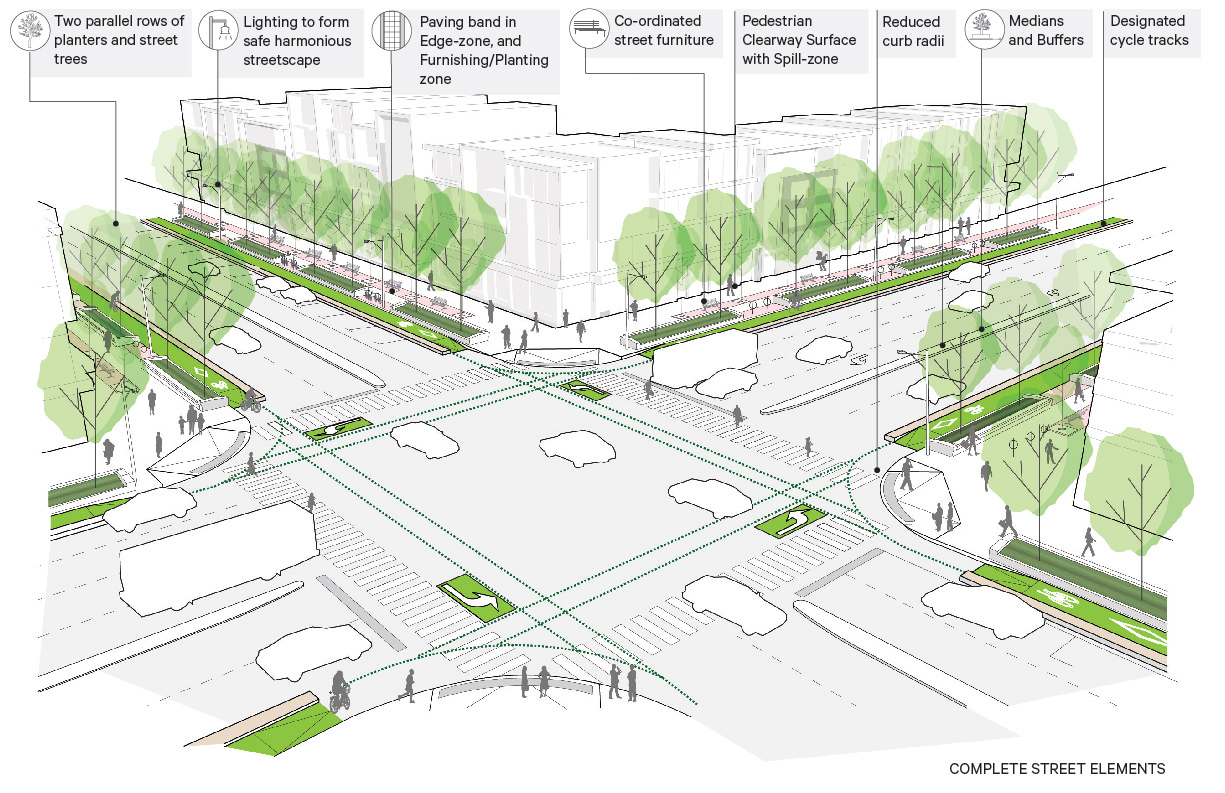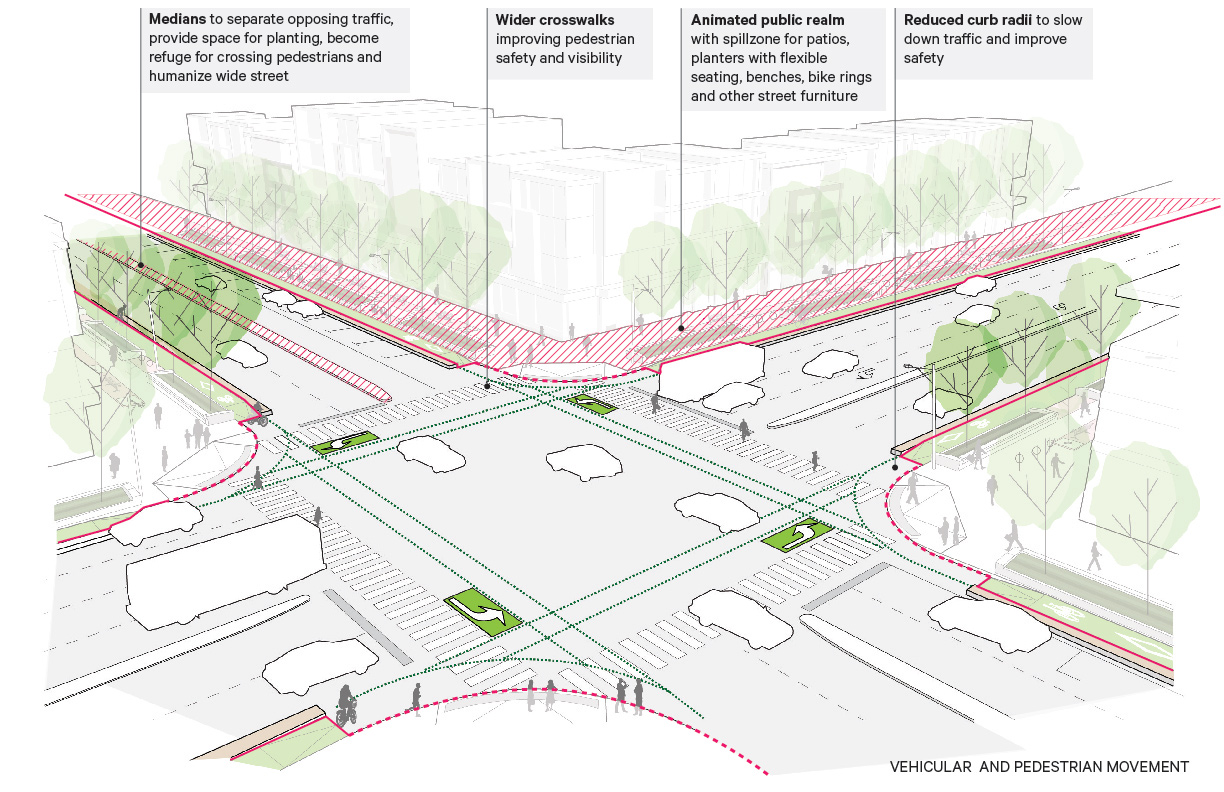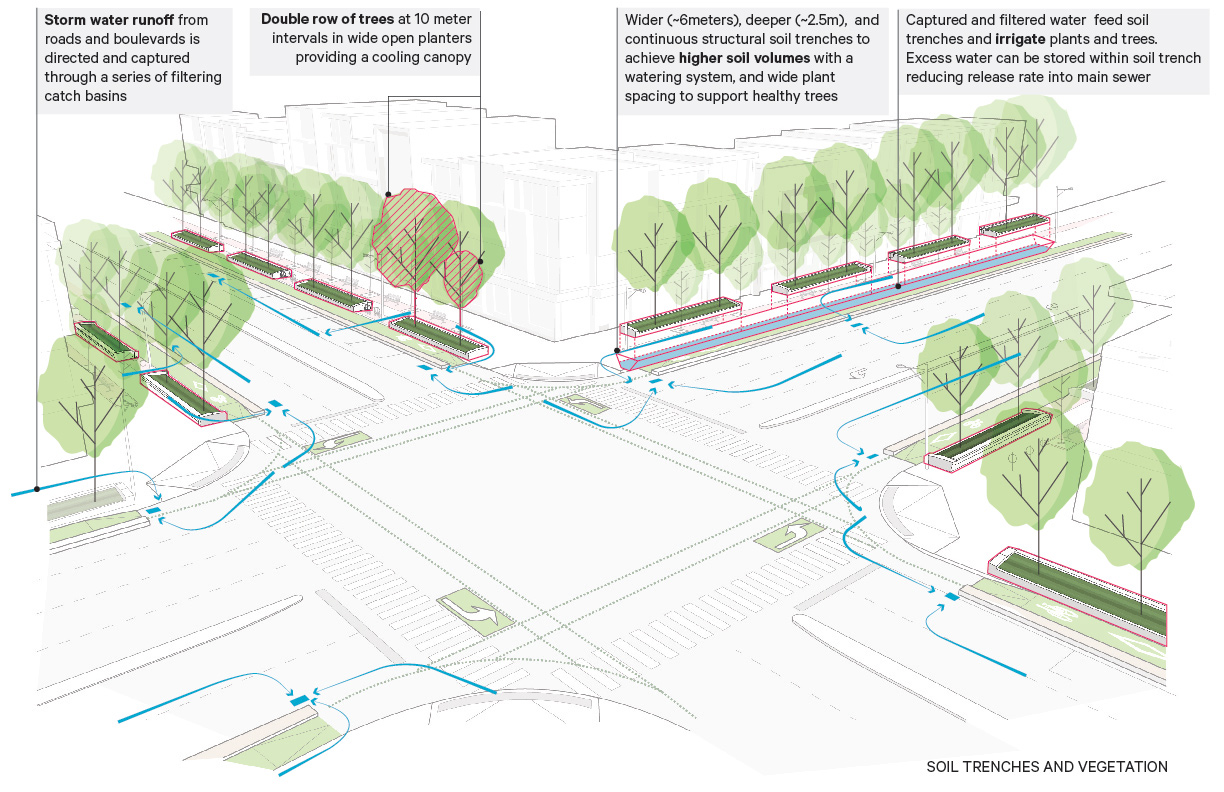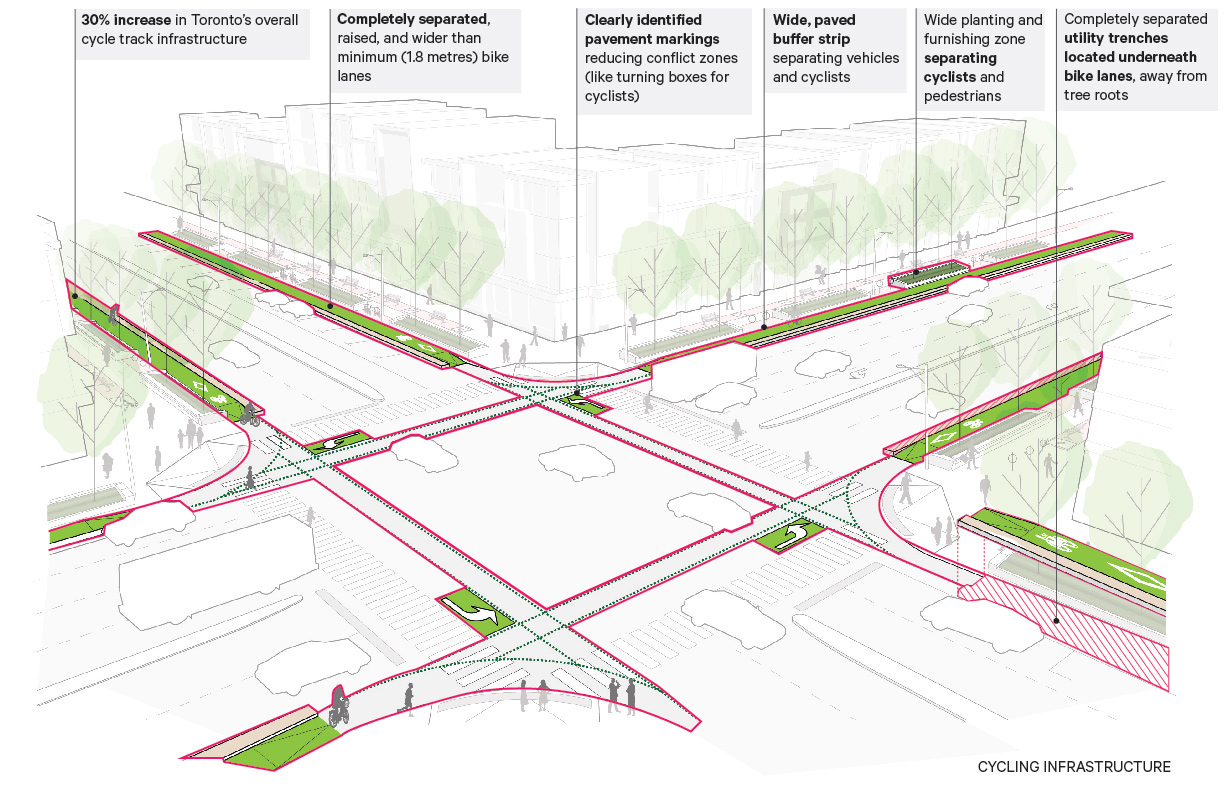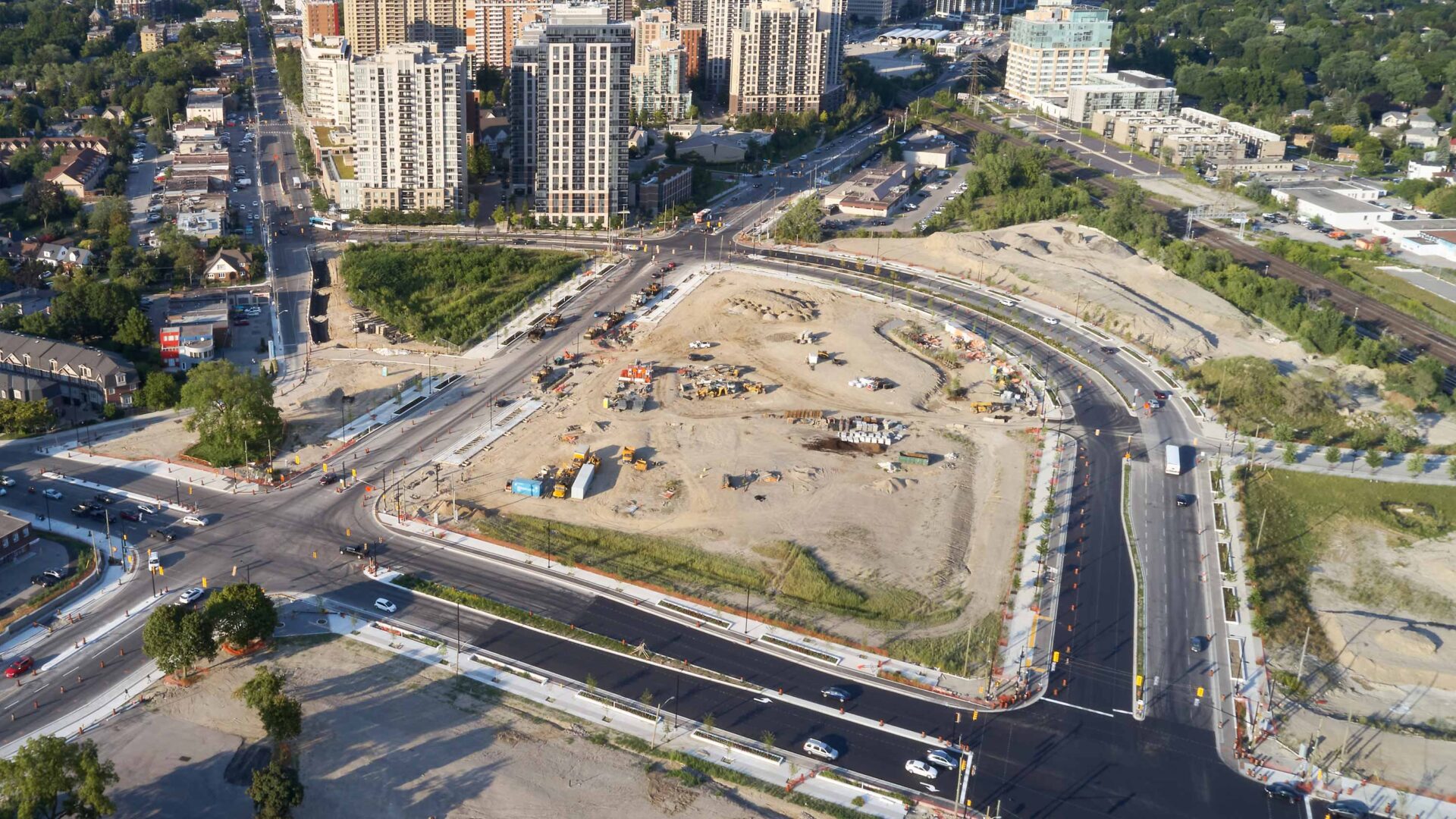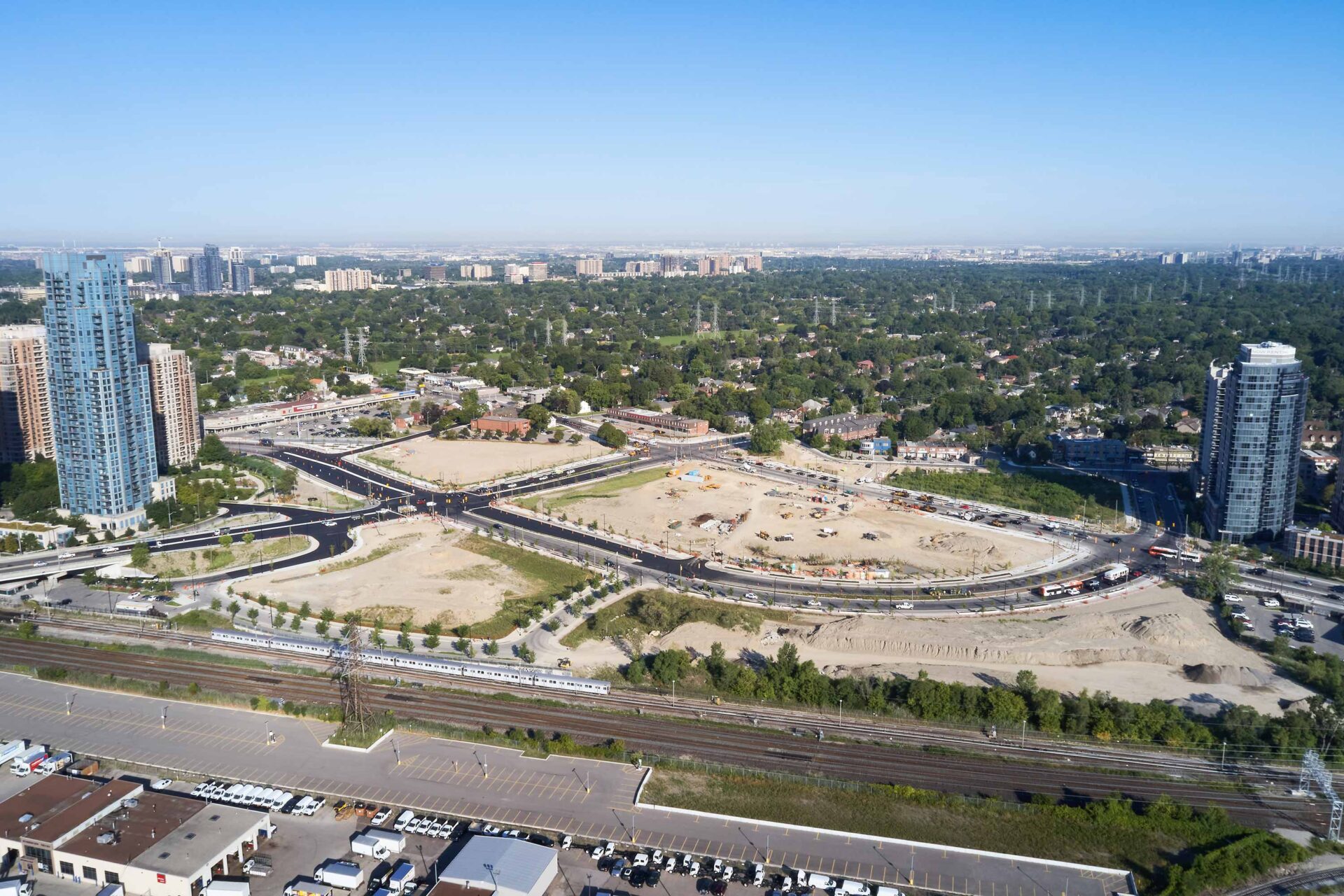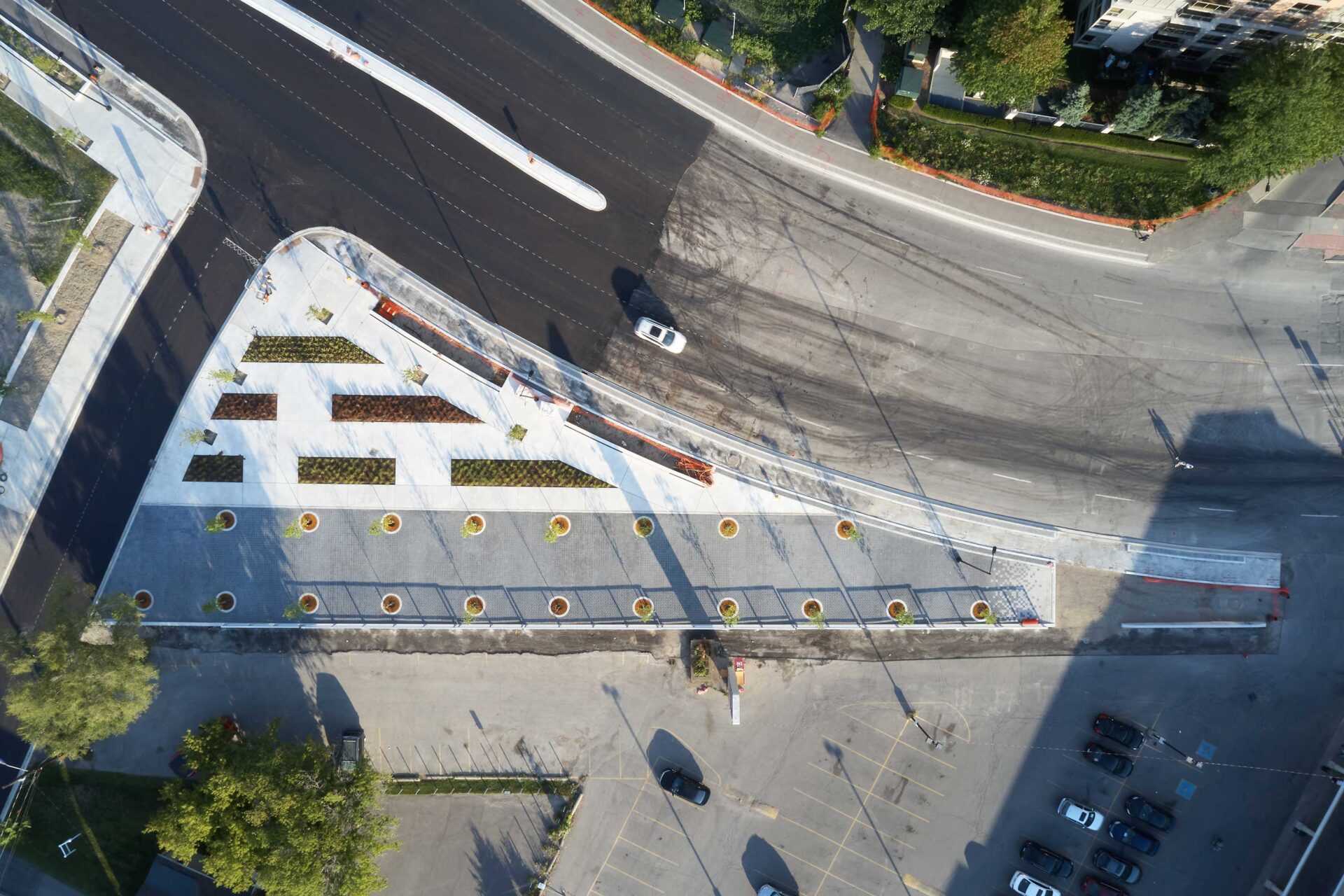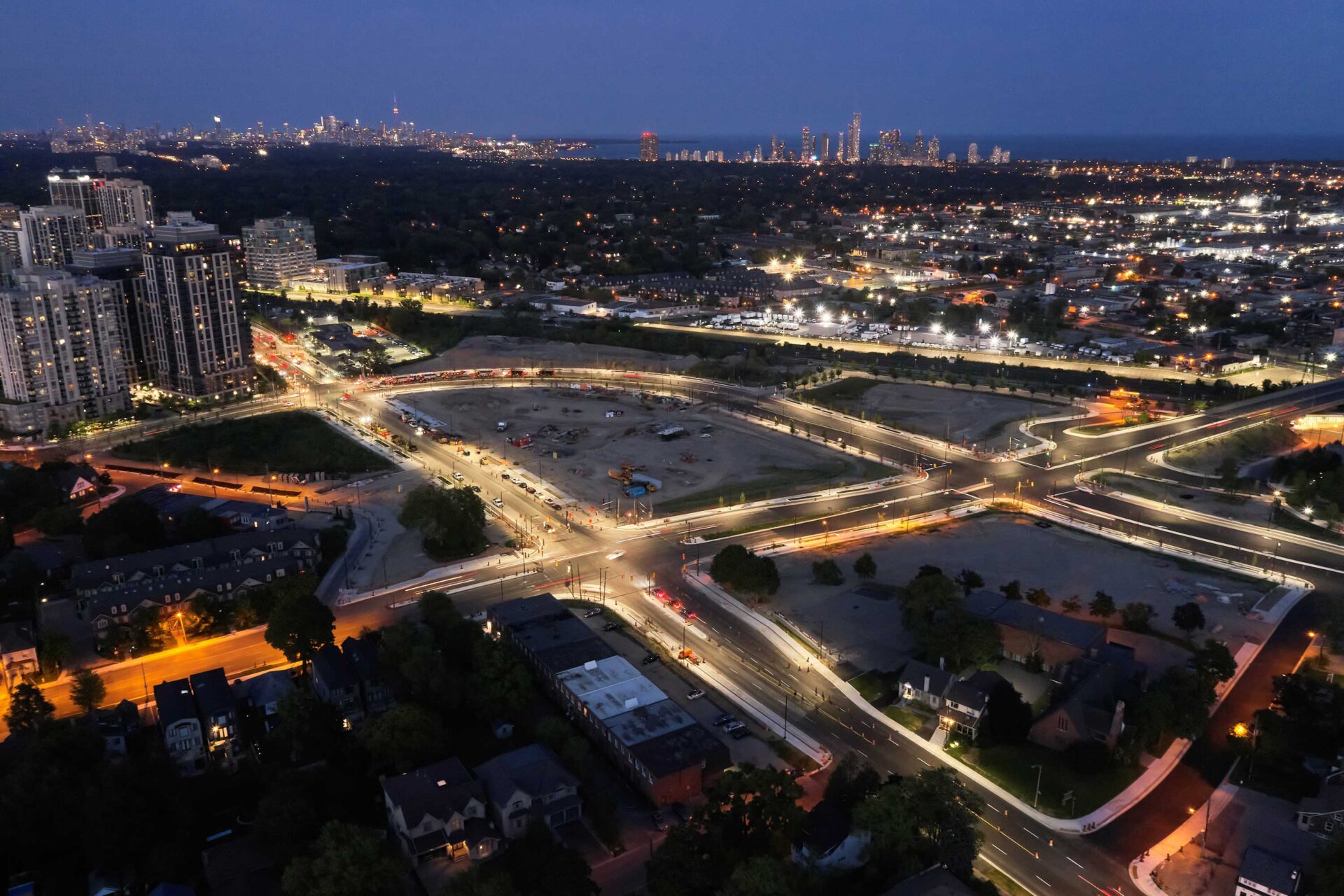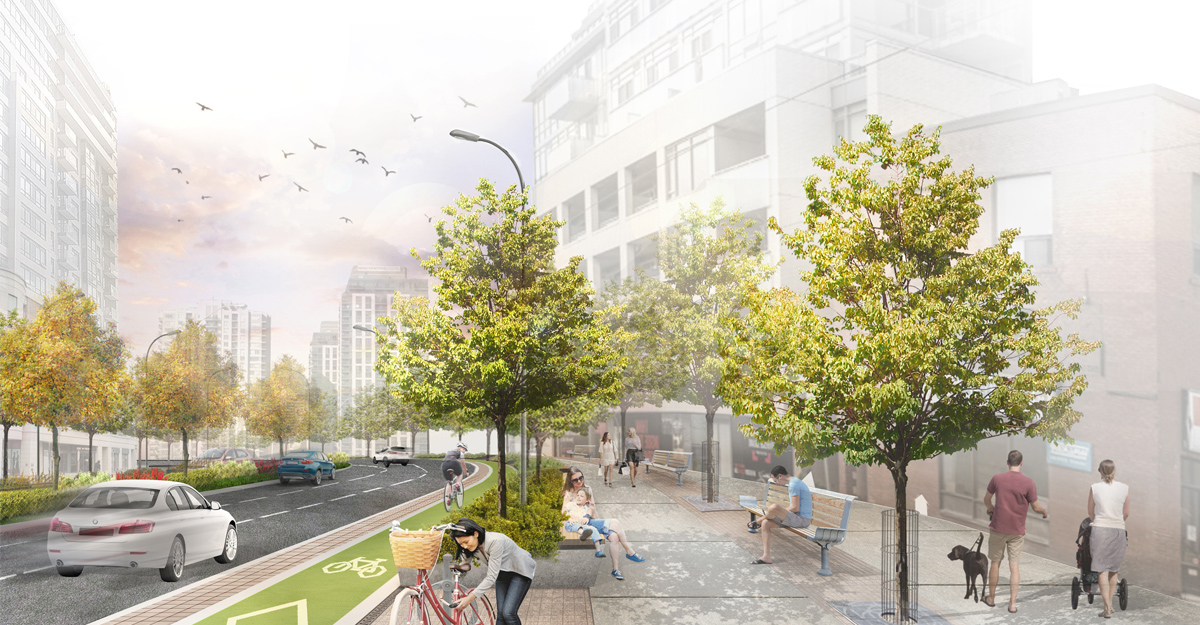Six Points Interchange
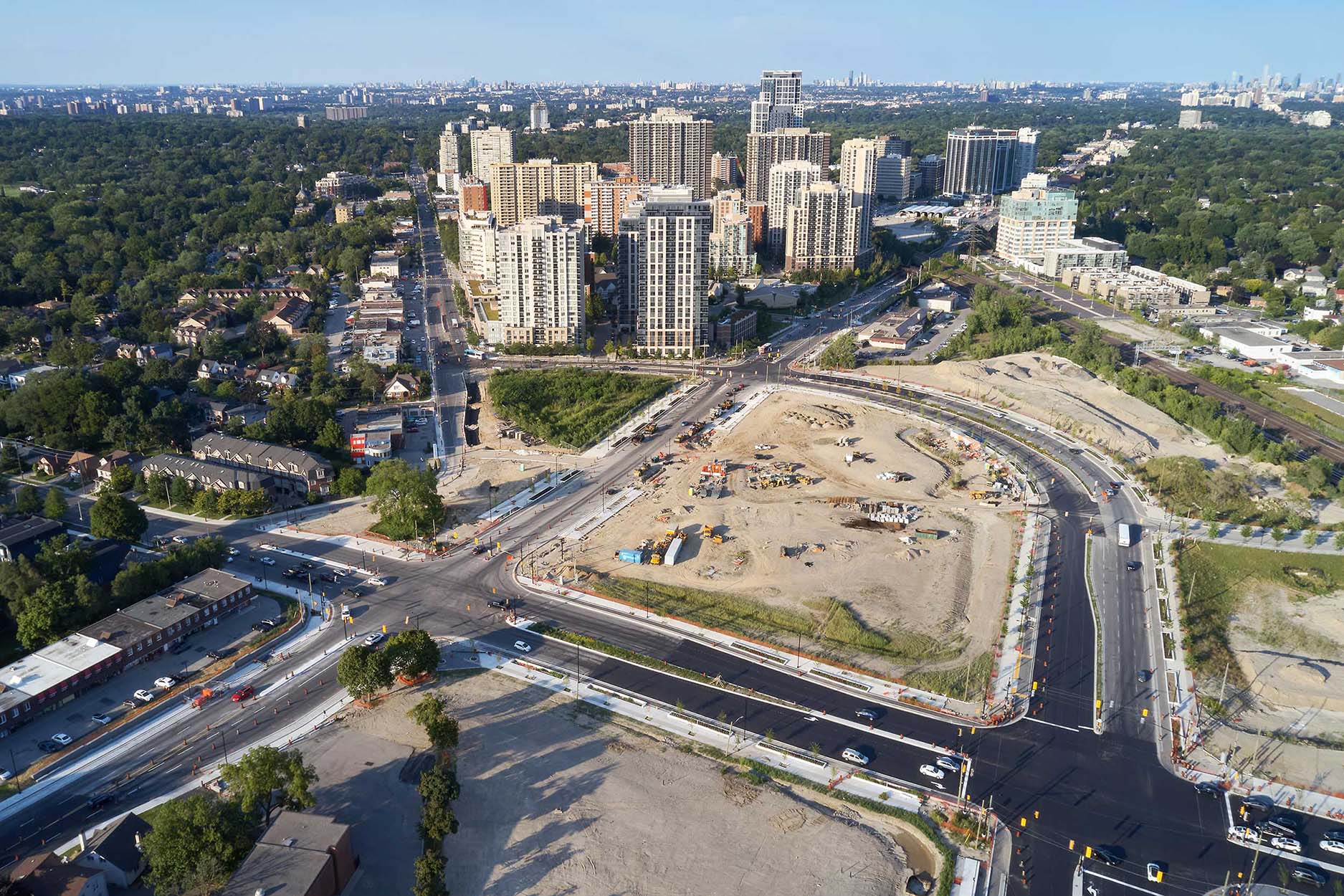
Six Points Interchange
-
Location
Toronto, ON
-
Client
City of Toronto
-
Dates
2013 - Present
- Expertise
- Urban Design
- Landscape
Treaty Lands
Toronto Purchase Treaty 13 (1805)
Indigenous Rights Holders
Mississaugas of the Credit First Nation
Historical Occupation
Anishinaabe, Attiwonderonk, Haudenosaunee, Huron Wendat
*Treaty, territory and historical occupation information has been included for educational purposes, and is meant to show respect for these caregivers. This information is not intended to be a finite view, nor is it intended to represent legal rights or definitive boundaries. To learn more about these matters, please contact the nations in question.
- RAIC National Urban Design Awards - Certificate of Merit, Urban Design Plans, 2018
- Consulting Engineers of Ontario - Award of Merit, 2018
- Toronto Urban Design Awards - Award of Merit, 2017
The vision for the Six Points Interchange was to transform a multi-tiered freeway junction into an engaging public realm, create connections to the surrounding neighbourhoods and amenities that are currently isolated, and elevate Etobicoke Centre into a significant regional hub. Located at the convergence of Dundas Street West, Kipling Avenue, and Bloor Street West, this '60s-era, car-focused, “spaghetti junction” has been untangled and replaced by three, grade-related intersections that will ensure pedestrians, cyclists, and motorists can co-exist safely. Six Points Interchange is a significant urban transformation project because it reclaims highways and re-imagines them as a thriving public realm. It is also the first set of intersecting complete streets to be designed and built in Toronto, thereby improving connections to Kipling Station, which has been expanded into a regional transit hub.
SvN led the landscape and urban design for Six Points Interchange. Other team members include HDR Corporation, Moon Matz Ltd, LGL Ltd, and Multiview Archeoworks. Construction is expected to be complete in 2020. Key features of the transformation include:
- 1.75 acres of land has been freed for park spaces
- 15.5 acres of land has been freed for mixed-use developments
- 526 new trees of various species with a distinct character planned for each of the new streets
- Thousands of native, drought-tolerant decorative plantings
- Catch basin and stormwater filtration system for boulevards
- Public boulevards on all streets, including patio space and public art
- 2,300m of completely separated bike lanes
- 144 new bike rings
- Special pavement markings to ensure that pedestrians, cyclists and motorists can co-exist safely
- Relocation of utilities to be underground
Awarded with 2018 RAIC National Urban Design Award, a 2018 Consulting Engineers of Ontario and a 2017 Toronto Urban Design Award, the Six Points Interchange will serve as a new civic centre located mid-way between Toronto’s international airport and the City’s downtown.
